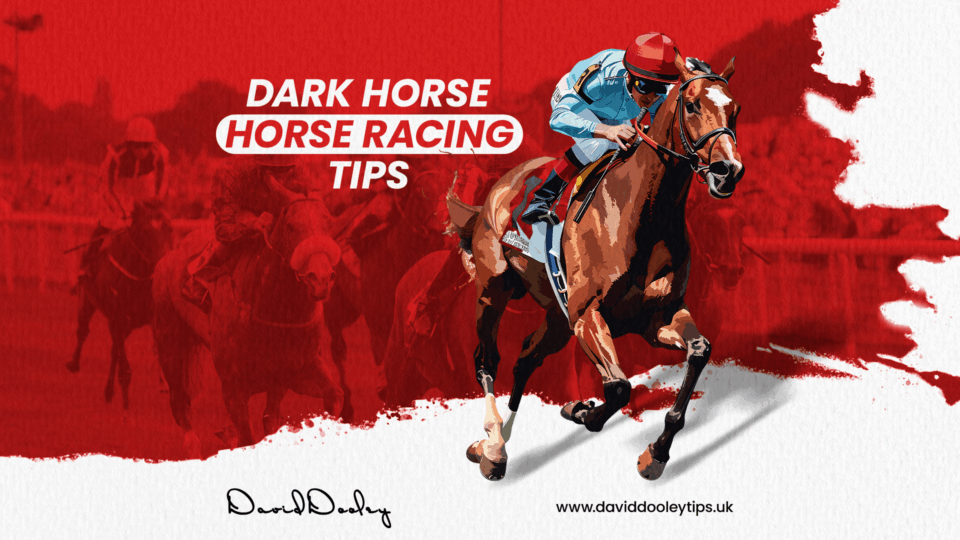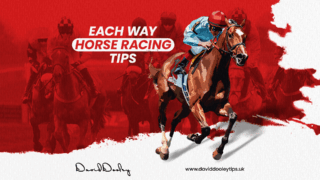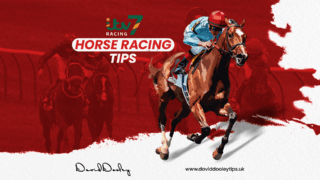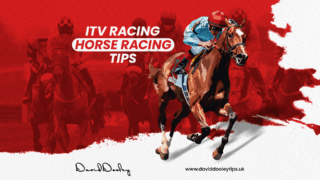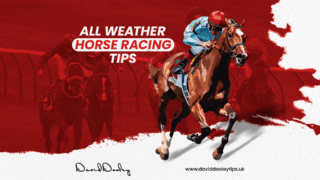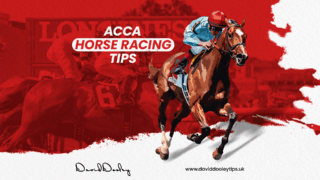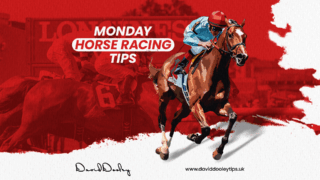Dark Horse horse racing tips identify runners that most people overlook, which means you can find bets with better value. These tips focus on horses priced at 10/1 or higher because their potential is often underestimated by bookmakers and punters. This approach allows you to back selections that could deliver significant returns if they place or win.
You can improve your betting strategy by considering dark horse selections since these horses offer an advantage due to their hidden potential. As a result, you gain access to insider knowledge that helps you spot better odds and less crowded bets, increasing your chances of success. Expert sites regularly update dark horse tips, so you can stay informed about the most promising outsides before races.
Understanding dark horse bets also means recognising the value of each-way wagers, which pay out if your horse finishes in the places. This method reduces losses and boosts potential profits because bookmakers often set place terms favourable to longer odds. By using these insights, you can make smarter choices and find bets that stand out from the usual favourites.
Meeting | Time | Name | Bet Slip |
|---|---|---|---|
| Haydock Park | 15:12 | Fat Harry | Add to BetSlip → |
| Kempton Park | 19:10 | Sheradann | Add to BetSlip → |
Contents
What Is a Dark Horse in Horse Racing?
A dark horse is a competitor that is not widely expected to win but holds hidden potential to outperform expectations. Understanding how dark horses differ from underdogs, how odds reflect this status, and recognising examples of famous dark horses will help you better spot promising bets in horse racing.
Defining Dark Horses Versus Underdogs
A dark horse is a contender whose ability is not well known or has been underestimated, which means its chances to win are often underrated by the public and bookmakers. Unlike an underdog, who is generally expected to lose based on past performance, a dark horse has some credible but overlooked factors that suggest it might succeed.
You can identify a dark horse by looking for horses with higher odds but signs of unexploited potential like recent improvement, a new trainer, or a change in race distance. This differs from an underdog that may lack such positives and is simply considered unlikely to perform well.
How Market Perceptions Shape Dark Horse Status
Market odds are shaped by the volume and direction of bets placed, which influences how a horse’s chances are viewed. Dark horses usually appear with higher odds because bookmakers factor in limited data or previous underperformance, so the betting market undervalues them.
Because of this undervaluation, dark horse bets offer higher rewards if the horse performs well. However, changes in odds before a race can reflect new information about the horse’s form or conditions, influencing whether it retains dark horse status or becomes a favourite.
Examples of Famous Dark Horses
Several dark horses have made notable impacts in racing history by winning against expectations. These horses typically had long odds but demonstrated sudden form improvement or benefited from ideal race conditions.
Examples include horses that were lightly raced or shifted trainers before a breakthrough win. These cases highlight how a dark horse’s potential can emerge strategically, proving that less favoured runners can claim victory with the right setup, jockey, or race day conditions.
How to Identify and Analyse Potential Dark Horses
Identifying potential dark horses involves understanding key signals in their past performances, the specific conditions of the race, and the strategic choices made by their trainers and jockeys. Careful attention to these factors helps reveal undervalued horses likely to perform better than odds predict.
Key Clues in Form Analysis
Your analysis of a horse’s recent form should focus on patterns that suggest improvement or consistency. Rather than dismissing a horse due to lack of wins, examine finishing positions, the class of races, and competitors faced. For example, a horse finishing strongly against higher-grade runners shows potential despite no victories.
Track how the horse performs over distances similar to the upcoming race, as this indicates suitability. Also, watch for subtle improvements such as shortening finishing times or better starts from the stalls. You should cross-reference these insights with racecards to detect trends that bookmakers may have overlooked, particularly with dark horses running at venues like Kempton.
Impact of Conditions and Race Type
Race conditions significantly affect a dark horse’s chances. You must consider track surface (turf or all-weather), weather impact, and race type (handicap, novice, or maiden). Some horses show marked improvements on specific surfaces, which means betting without considering these factors reduces accuracy.
Additionally, examine the race distance relative to the horse’s past form. A step up or drop in distance can either disadvantage or benefit the horse. Where the race type allows lesser-known horses to compete evenly, such as a handicap at Kempton, these conditions create opportunities for outsiders to thrive unexpectedly.
Reading Trainer and Jockey Intentions
Understanding the intentions of trainers and jockeys gives you insight into a horse’s potential. Trainers often position promising dark horses carefully, entering them in races that suit their abilities or trying new tactics. Consistent entries by the same trainer or recent changes of jockey can signal confidence or a testing phase.
The experience and form of the jockey should also inform your view. A skilled jockey riding a dark horse could navigate tricky race conditions better, enhancing the chance of a strong finish. Monitoring trainer-jockey partnerships on racecards helps you pick horses with strategic backing rather than relying purely on public odds.
Strategic Betting on Dark Horses
Strategic betting on dark horses involves balancing higher odds with heightened uncertainty. You need to appreciate the differences between backing underdogs and favourites, apply specialised bet types, and manage your bet slip to control exposure. Careful planning in these areas improves your chances of making profitable dark horse bets.
Betting on Dark Horses Versus Favourites
Betting on dark horses demands a distinct mindset compared to favourites. Dark horses have higher odds because they are underestimated or less proven, which means they offer greater potential returns but lower probability of winning. Favourites, by contrast, are backed by data and reputation, so while their odds are shorter, their winning chances appear more reliable.
You must evaluate true winning probabilities rather than just the odds. If you believe a dark horse’s chances exceed bookmakers’ assessments, the bet becomes valuable. However, favourites usually require less detailed research since their form and consistency are well known. Your approach should involve deeper insight and risk acceptance for dark horse bets.
Each-Way and Lucky 15 Betting Strategies
Each-way bets allow you to gain returns if a dark horse finishes in the top places, not just first, reducing losses but still benefiting from strong performances. This method suits dark horse bets where outright wins may be less likely but placing is achievable. The place terms vary across racecourses, so knowing these details improves your edge.
A Lucky 15 combines 15 bets over four selections, including singles, doubles, trebles, and fourfold accumulators. Using a Lucky 15 with dark horses diversifies your risk and maximises chances of returns even if some picks do not win. This staking plan can be effective because it spreads your betting out and captures value from multiple outcomes without needing every selection to succeed.
Managing Your Bet Slip and Staking Plan
Effective management of your bet slip is critical with dark horse betting because the stakes are often higher relative to probability. Avoid loading too many bets into one slip without consideration of overall exposure. Spreading bets across several dark horse opportunities or mixing them with safer options helps balance potential losses.
A disciplined staking plan supports longevity in betting. Use small, consistent amounts per bet to cope with the greater variance of dark horse bets. Adjust stakes based on confidence and potential value, which means increasing stakes when you identify stronger dark horse picks and lowering them when uncertainty is higher. This balance will help you control losses and capitalise on valuable longshot chances.
Market Movers and Late Value Opportunities
Tracking shifts in betting odds reveals changes in market confidence. These movements help you identify horses gaining popularity or losing favour, offering clues to potential dark horses and outsiders worth backing.
Spotting Market Movers
Market movers are horses whose odds shorten significantly before a race. This shortening indicates increased betting activity, which means more people believe the horse has a genuine chance to perform well. You can find these odds changes on most horse racing websites.
By monitoring these shifts, you spot which horses are attracting money. For example, a horse starting with odds of 9/1 dropping to 5/1 signals strong support. This can highlight value bets, especially if the market hasn’t fully adjusted to recent form or conditions.
Market movers often point to late confidence from informed sources like trainers or jockeys. Betting on them can give you an edge, as the market reacts quickly to fresh tips or inside knowledge.
Interpreting Odds Changes for Outsiders
Outsiders with changing odds can signal emerging value you might miss without careful attention. When an outsider’s odds shorten, it suggests growing backing despite longer initial odds, so their potential to upset favourites increases.
You must consider the cause behind the odds movement. It could be due to track conditions, late jockey changes, or insider information. If the reason aligns with your research on form and conditions, the outsider becomes a stronger contender.
Conversely, odds drifting longer usually means decreasing support, which helps you avoid overhyped runners. Evaluating these patterns helps you choose dark horse tips with genuine value rather than favourites who are overbet.
Focusing on live odds and market fluctuations lets you identify when an outsider’s price offers better return prospects before the market fully catches up. This timing can improve your overall returns on value bets.
Best Practices for Following Dark Horse Tipsters
To get the most from dark horse horse racing tips, you should focus on accurate records and combine tipster insights with your own judgement. This approach helps avoid blind reliance and sharpens your ability to spot real value.
Evaluating Tipster Track Records
Assessing a tipster’s past results is crucial before trusting their dark horse selections. Look for verified performance data over an extended period, including both wins and losses, which shows consistency and transparency.
Pay attention to profitability metrics like return on investment (ROI) and strike rate, as these reflect how often the tipster’s picks succeed and whether those wins are lucrative. Beware of tipsters with short-term success or unverified claims because they might skew results.
Also, check if a tipster specialises in dark horse bets specifically, as some may focus on favourites or other markets, which affects the quality of their outsider selections. To sum up, only follow those with transparent, proven, and relevant records.
Integrating Tipster Advice with Personal Analysis
You should never rely solely on dark horse tips without adding your own analysis. Use tipster advice as a starting point, then examine race conditions, horse form, jockeys, and latest odds to confirm or reject the suggestions.
Doing your own research helps you spot discrepancies between tipster selections and current race data, which may indicate an overlooked opportunity or a tip that needs skipping. This means you use tipster tips as informed signals, not definitive answers.
Combining both sources reduces the chance of poor bets and improves your ability to identify under-valued horses. Adjust your stakes based on your confidence level to manage your playing strategy methodically.
Major UK Racecourses and Dark Horse Races
Certain UK racecourses provide more opportunities to spot valuable dark horse bets due to their race conditions and profile. You can improve your selections by focusing on venue characteristics and scrutinising racecards and results carefully.
Spotting Value at Kempton and Other Notable Venues
Kempton is a key venue for finding dark horse potential because of its all-weather track, which often changes the form dynamics seen on turf courses. Horses that perform well on all-weather surfaces may be undervalued elsewhere, creating value betting chances.
Other notable venues like Ascot, Newmarket, and Lingfield also present frequent dark horse opportunities thanks to varying track conditions and race types. At these courses, pay special attention to horses that have performed well under similar going or over comparable distances but carry higher odds.
Factors to prioritise:
- Track surface: All-weather forms differ significantly from turf.
- Recent form: Horses adapting quickly to changing conditions often outperform expectations.
- Course-specific history: Some horses excel uniquely at specific tracks.
Recognising these nuances aids in backing horses overlooked by the general market.
Understanding Racecards and Results Context
The racecard is your primary tool to uncover dark horse prospects. It combines past performances, jockey and trainer details, and conditions which help you identify horses that others may miss.
Focus on patterns in the racecard like consistent improvement, favourable draw, or conditions suited to a particular horse. Jockey or trainer success rates on similar races can signal a horse’s hidden edge, often found only when you study their full performance history.
Analysing results helps you understand how a race unfolded and spot inconsistencies in form that the market may have ignored. For instance, a horse finishing strongly despite a poor draw or slow pace may be undervalued in future outings.
By checking recent racecards alongside full race results, you can better evaluate horses with chances of exceeding market expectations. This strategy enhances your ability to pinpoint dark horses effectively.

